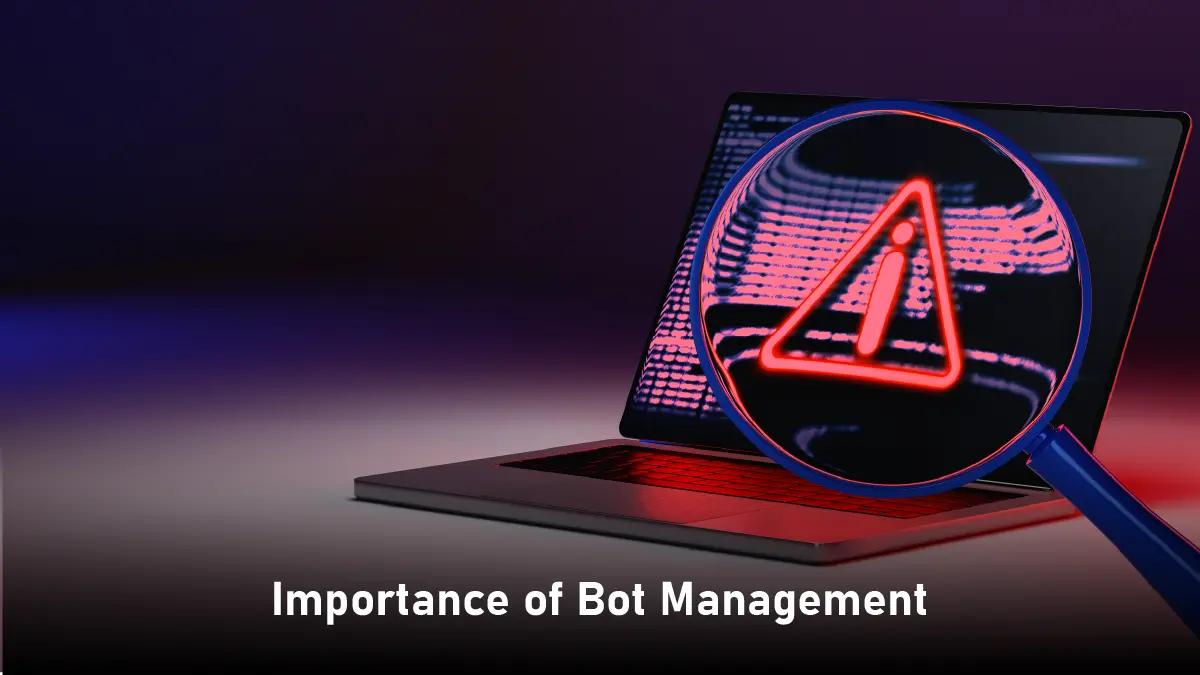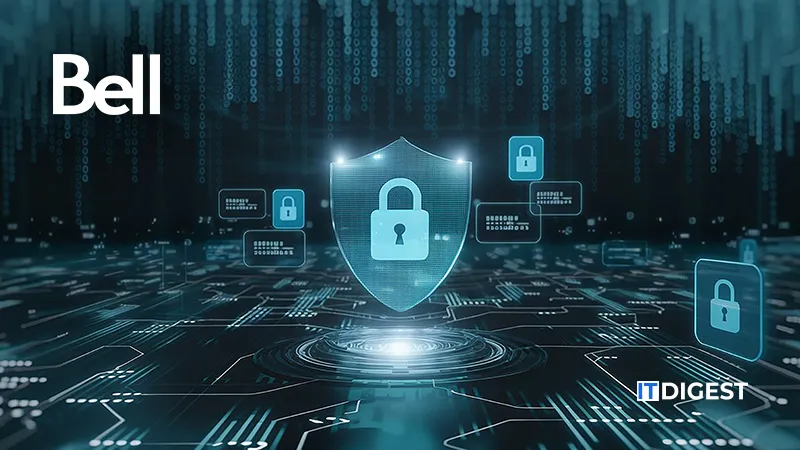You are not protected, and your website is being attacked. A report claims that almost two out of every three companies are susceptible to simple automated threats. The fact that sophisticated bots are able to circumvent cybersecurity measures 95% of the time is even more concerning.
For this reason, bot management is essential for any online business. Investing in strong bot mitigation software is not just a good to have, but also essential, given that sophisticated bots are now imitating human behavior using AI and sophisticated fingerprinting evasion tactics.
This article will discuss the idea of managing bots, its significance, and how a strong management system may assist you in managing bot traffic and safeguarding the security of your website, mobile application, and API.
What is Bot Management?
The process of recognizing every single bot on your network and comprehending its objectives so that you can react appropriately is known as bot management. To rank in search engine results, you should grant access to your website to a helpful bot, such as an SEO tool or Googlebot and Bingbot.
Malicious bots should be banned right away, such as those that aim to steal your content or prevent actual visitors from visiting your website. Both identifying bot activity and figuring out whether it is hostile or not are part of bot management.
Two major obstacles in managing bots are:
- distinguishing between bot traffic and actual human traffic
- distinguishing between harmful bots (bad bots) and those with good intentions (good bots)
Because modern bots are so complex, it can be difficult to detect them. Without the proper bot management tools, it might be difficult to distinguish between human users and bots because they can imitate human behaviors like randomized clicks and nonlinear mouse motions.
And keep in mind that not all bots are harmful. Some bots are useful for your website; for instance, Googlebot crawls and indexes websites so that users can find them on Google. You should prevent malicious bots when they show up, but you shouldn’t block Googlebot if you want your website to be shown on Google.
Therefore, there are two components to an optimal bot management practice:
- Effective identification of bad bot traffic
- Management and mitigation of malicious bot traffic
What is the Role of a Bot Manager?
Any software program that controls bots is called a bot manager. Rather than merely barring all non-human traffic, bot managers ought to be able to let some bots through while blocking others. A page cannot appear in Google search results if all bots are prohibited and Google bots are unable to index it, for example. This will significantly lower the amount of organic traffic that the website receives.
A good bot manager achieves the following objectives. It is capable of:
- Recognize human visitors from bots.
- Determine the reputation of the bot
- Determine the IP addresses of bot origins and block them according to their reputation.
- Examine the behavior of the bots and add ‘good’ ones to allowlists.
- Use JavaScript injection, the CAPTCHA test, or other techniques to test possible bots.
- Limit the rate at which any possible bot overuses a service.
- Deny ‘bad’ bots access to specific resources or content.
- Provide bots with alternate content.
Good Bots vs. Bad Bots
The roles and goals of good and bad bots differ. Good bots can enhance customer experiences and are made to assist consumers and businesses. To assist customers find the best deals, search engine bots, for instance, trawl the web and index material so that it appears in searches. By stealing data, taking over user accounts, submitting spam data through online forms, and engaging in other malicious activities, bad bots, on the other hand, are employed to carry out evil aims and can seriously affect people and businesses.
Of all web traffic, 42% is made up of bots, 65% of which are malicious. Generally, two key characteristics set good bots apart from bad ones: they don’t conceal their status as bots, and they adhere to the guidelines specified in a website’s ‘robots.txt’ file. Usually, they are used by respectable, well-known businesses that offer beneficial services. Although they are known to attempt to pass themselves off as genuine bots, bad bots do not clearly identify themselves as good bots do, nor do they adhere to webmasters’ regulations for bots.
Importance of Bot Management
According to Security Magazine, bot management solutions that are combined with web application and API protection (WAAP) can provide comprehensive protection. As bots get more complex, effective bot management systems may help safeguard both users and websites. Over 65% of websites are still vulnerable to simple bot attacks. What bot management should offer is as follows:
- Good solution criterion: Bot management must operate in the background to eliminate malicious bots and boost the efficiency of beneficial ones.
- Effectiveness: Even with bots that may evade common detection techniques, a bot manager must be able to distinguish between good and bad bots, block harmful bots, and do so.
- Efficiency: Using real-time scrubbing techniques, bots must be screened through several stages while maintaining a high degree of performance and speed for the user.
- Detection ability: Because bots can frequently imitate human behavior, bot administrators must be able to identify harmful bots, no matter how complex they are.
- Control: Bot managers must have the ability to both identify and manage which bots are good and bad. For instance, giving a hostile bot fake data back can both counteract its bad intent and provide a counterattack.
How is Bot Management Carried Out?
Bot managers can employ CAPTCHA or JavaScript challenges to detect bots, which detect whether a conventional web browser is being used. By comparing a user’s activity to the typical behavior of users in the past, they can also utilize behavioral analysis to identify which users are bots and which are humans. The latter requires bot administrators to have a vast amount of high-quality behavioral data to compare to.
If a bot is found to be malicious, it may be prevented from using an online resource entirely or redirected to another page.
An allowlist, which is the reverse of a blocklist, is a list of permitted bots to which good bots can be added. Through additional behavioral research, a bot manager can also differentiate between good and bad bots.
Using the robots.txt file to create a honeypot is another method of managing bots. A honeypot is a fictitious target that reveals the bad actor as malevolent when they gain access. In the case of a bot, a honeypot can be a page on the website that the robots.txt file prohibits bots from accessing. While some evil bots will crawl the webpage, good bots will scan the robots.txt file and avoid that webpage. Bad bots can be found and stopped by monitoring the IP address of the bots that enter the honeypot.
Which Kind of Bot Attacks Are Prevented by Bot Management?
Numerous attacks can be prevented with the use of a bot management solution:
- DoS attacks
- DDoS attacks
- Credit card stuffing
- Credential stuffing
- Spam content
- Brute force password cracking
- Data scraping/web scraping
- Email address harvesting
- Click fraud
- Ad fraud
Even though these additional bot activities aren’t generally seen as ‘malicious,’ a bot management need to be able to prevent them:
- Inventory hoarding
- Shopping cart stuffing
- Automated posting on social forums or platforms
Summing it Up
Bots represent an obvious and increasing threat to any digital business as they continue to advance in speed, sophistication, and deceit. Traditional protections are falling behind, and it’s becoming harder to distinguish between both good and bad bots. Bot management is a strategic necessity for CIOs and CISOs, not just a technical precaution.
Organizations may improve security while maintaining user experience by investing in intelligent bot management solutions that can identify intent, differentiate malicious automation from helpful traffic, and adjust in real time. More significantly, proactive bot defense contributes to the protection of brand reputation, digital assets, and revenue.
The question is not whether to implement bot management in the current climate, where almost all businesses rely on online platforms, but rather how soon to do so. Leaders who take immediate action will protect their businesses and create a sustainable competitive advantage.
































